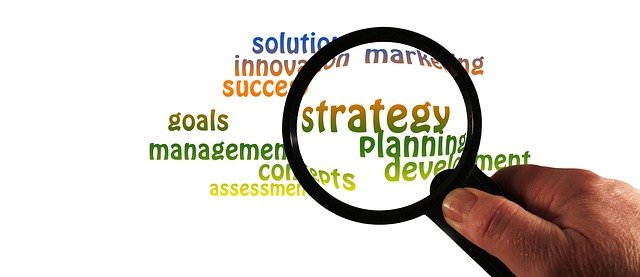The traditional marketer’s toolkit has been losing its edge over the years. Today, most marketers prefer using an Inbound Marketing Strategy over an Outbound Strategy for several reasons but primarily because the buyer journey has evolved.
Inundated by mass advertising and brand messages several times a day, buyers have become adept at ignoring content that they haven’t requested. Unsurprisingly, the ROI of outbound lead generation activities has rapidly declined.
According to the 2018 HubSpot State of Inbound Report, only 16% of marketers say that outbound delivers a higher ROI than their other marketing activities. On the other hand, 53% of marketers say that inbound marketing delivers a higher ROI than any other marketing strategy.
For a lot of marketers, inbound has replaced the interruptive and ineffective, outbound marketing tactics with content strategies that allow marketers to attract, connect, engage, and delight modern buyers.
Today, buyers have control of the buying process and control most if not all communication between them and the seller.
Table of Content
- What is Inbound Marketing?
- Benefits of Inbound Marketing
- A Template for Effective Inbound Marketing
- 1. Competitive Benchmarking
- 2. Marketing and Sales Alignment
- 3. Strategy Development
- 4. Content Marketing
- 5. Demand Generation
- 6. Lead Management and Marketing Automation
- 7. Customer Relationship Management
- 8. Performance and Revenue Reviews
- 9. Branding
- Final Verdict
What is Inbound Marketing?
Inbound marketing includes strategies that align digital marketing efforts with the buyer’s decision-making process.
Its objective is to:
- Demonstrate a company’s expertise to buyers, whenever and wherever they are looking for it
- To earn the buyers trust
- To enable the right leads to convert into customers
Inbound marketing integrates several digital marketing tactics into a single system that allows marketers to build a cohesive strategy that is highly scalable, reliable, and measurable.
Some of the digital marketing tactics it includes are:
- Website usability and functionality
- SEO and keyword research
- Progressive profiling of all website visitors
- Blogging
- Mobile optimization
- Visitor segmentation and lead scoring
- Social media
- Email marketing
- Competitive analysis
- Integrated analytics
- Personalized calls-to-action
- Automated notifications to sales
- Persona development
- Email nurturing
Benefits of Inbound Marketing
Some of the benefits of inbound marketing strategy that make it a robust profitability driver include:
- Customer Centricity: Inbound marketing a natural approach to attracting and retaining customers due to the overwhelming adoption of mobile and social tools and the changing customer journey favoring research and conversation before buying.
- Automation and Integration: Sales and marketing technologies (e.g., CRM and marketing automation), make it easier to optimize the entire customer journey and sales processes. Additionally, these tools allow marketing and sales alignment by enhancing communication and cooperation between these teams.
- Accountability and Measurability: All facets of inbound marketing are measurable across all channels based on impact and effectiveness for specific key performance indicators (KPIs). KPIs include conversion rates, lead volume, website traffic, customer lifetime value, cost to acquire a customer, cost-per-lead, churn rates, and additions to the pipeline
- Optimization and Enhancements: Every person, piece of content, campaign, and channel can be tested and optimized for success. New and innovative strategies can be added as they are tested and developed.
- Cost-effectiveness: The most effective channels, sources, and strategies can be identified, optimized, and prioritized according to those that have the best performing KPIs
- Scalability: Refined processes (including technology, human capital needs, and training) can be reproduced and/or adapted to new products, markets, and changing conditions.
A Template for Effective Inbound Marketing
Inbound marketing is not a static plan or a formula but rather a series of strategic actions that begin with understanding your business needs, challenges, goals, and resources.
As such, every company will have inbound marketing strategies that are better suited to its peculiarities. That said, some inbound marketing strategies tend to perform better than others, below are ten of the most highly effective inbound marketing strategies. These strategies can also be regarded as a template for implementing inbound marketing.
1. Competitive Benchmarking
Comparing your business to your competition can provide perspective about the inbound activities that can help you bridge the gap where you fall short or maintain ground where you have a competitive edge.
Several useful tools can enable you to gain insights about your competitors and help you to pursue the right activities that will give you a competitive advantage. Some of the resources that you can use for competitor analysis include:
- Employment websites
- Online reviews
- Competitor websites
- reviews
- News media
- CRM and other MarTech tools like Google Analytics
2. Marketing and Sales Alignment
Having a collaborative review where internal stakeholders meet to align on an accurate picture of the company’s vision and goals is critical for inbound marketing success.
Without sales and marketing alignment, the inbound marketing strategy is at risk of failing to meet expectations.
The collaborative review between sales, marketing, and other stakeholders should develop a service-level agreement (SLA) that outlines commitments, roles, and responsibilities. The SLA should outline quantifiable activities and metrics so that all stakeholders can have expectations about the shared revenue goals.
Some of the critical questions that should be answered by the collaborative review include:
- What are your 3-month, 6-month, and 12-month goals?
- What is your marketing process, sales process and how well is it working?
- Are marketing and sales aligned? If not, why?
- What are your plans for using technology in sales and marketing? How are you going to measure it’s effectiveness and adoption level?
- Who are your customers and how well is your message being received by them?
3. Strategy Development
Developing a comprehensive & detailed strategy sets the pace for all inbound marketing efforts to achieve your company’s objectives. It involves comprehensive research to:
- Assess the market and competitive landscape
- Map out engagement with prospects and leads and to figure out the buyer’s journey
- Develop messaging that matches every buyer persona
- Create and deliver content which can be used for multiple campaigns
- Generate demand for revenue growth
One of the most crucial components of strategy development is coming up with buyer personas. A buyer persona is an imagined character that epitomizes your ideal prospect. The buyer persona is an exhaustive composite of your perfect customer’s behaviors, motivations, and characteristics. Its purpose is to help you appreciate the motivating beliefs, secret desires, and fears that influence a customer’s buying decisions.
If you do not understand your customer, you are likely to make strategic mistakes that will have a detrimental effect on your inbound marketing in the following ways:
- Your messages, outreach timing, and branding are likely to be off-target
- >Your content marketing strategy might not be relevant to buyers
- You will end up targeting the wrong markets with your campaigns
- You will capture a substantial amount of unqualified leads that will divert the attention of your sales team from qualified prospects
4. Content Marketing
Content can have several different forms and purposes depending on the stage of the conversion funnel. Some of the different types of content include white papers, blogs, videos, social media updates, and emails.
At the top of the funnel (TOFU), content is meant to attract potential buyers so that they can exchange their contact information for educational resources.
In the middle of the funnel (MOFU), content is intended to keep leads interested and engaged. At this stage, content is also expected to answer and qualify the lead’s questions as well as assist marketing and sales in qualifying them.
At the bottom of the funnel (BOFU) content is meant to ensure customer satisfaction and retention, as well as nurture and upsell opportunities.
The vital components of content marketing include:
- Setting goals and timelines
- Deciding on the right products and markets
- Picking the right personas and buyer journey stages
- Considering useful components of previous marketing strategies and activities
- Picking valuable in-house content and content resources
- Developing new content resources and tools including content maps, editorial calendars, and content audits
5. Demand Generation
Ideally, demand generation is intended to get the targeted content to the right people, at the right time, and in the right place. The main reason for sending targeted content to targeted individuals at the right time and place is to ensure that they consume it and benefit from it.
The key objectives of demand generation include:
- Brand awareness. To be found effortlessly and more often than the competitors present online
- Discovery. To be the most prominent solution that potential customers will encounter.
- Lead generation. To automatically qualify leads instead of cold calling every potential customer.
- Market creation. To educate target audiences and help them confirm that their problem and a solution exists.
- Market share. To ensure that target audiences are not turning to your competition for a solution that you have.
6. Lead Management and Marketing Automation
Even if you have targeted your leads with demand generation campaigns, the leads may not always be ready to buy. There could be several reasons for this hesitation like the customer is interested but:
- Do not yet have an urgency to convert or to purchase
- May not have an immediate budget for the product
- The customers don’t have enough trust in you and/or your product
To address these challenges,
- Convey urgency through different techniques including exclusive offers, limited inventory, discounts, etc.
- Communicate your product value in a manner that addresses their pain points
- Encourage and build trust in different ways using product reviews, testimonials, case studies, engaging content, and personalized automated marketing campaigns.
7. Customer Relationship Management
Customer relationship management enables sales and marketing teams to integrate and work as a unit through lead intelligence to optimize the sales process. Some of the critical components of customer relationship management include:
- Defining lifecycle stages: As leads go through the conversion funnel, their needs and concerns change. By considering the number of visits a lead makes to a website, a marketer can offer information that gradually becomes more product-centric as their understanding of their solution improves. By doing this, the marketer avoids scaring away a lead too soon and instead leverages the opportunity to connect and engage the lead.
- Implementing lead scoring: Lead scoring is a tool that allows sales and marketing to understand and agree on what qualifies a lead as a sales qualified lead (SQL). Lead scoring is done by grading leads according to the actions they take in order to indicate sales-readiness.
- Develop new segmented lists: Use questions that align sales and marketing teams and further help them to determine whether a lead is qualified or not. Add some of these questions in forms that can be used as lead magnets. The purpose is to create segmented lists that can be used to target and personalize the marketing and enhance the sales experience.
8. Performance and Revenue Reviews
As a marketer, if you want to maintain your marketing budget, it is crucial to demonstrate how effective your efforts are to the company’s overall bottom line. Business executives demand to know the number of customers and the amount of revenue that the company has acquired through inbound marketing efforts. Also, performance and revenue reviews help sales and marketing prioritize their activities gaining tangible feedback in the form of metrics.
Data & Insights gathered from the performance and revenue reports should break down as follows:
- Traffic, leads and conversion rates. A monthly scorecard showing raw data for each metric against projected goals for each KPI. Content published each month should be tracked in order to ensure compliance with the overall inbound strategy.
- Campaign-based metrics. Appraise the effectiveness of individual campaigns and compare channels to optimize for continuous improvement.
- Lifecycle stages. Create a report that illustrates the movement of leads through the conversion funnel based on lead scoring and leads behavior. Workflows and smart lists are useful tools to use.
9. Branding
Branding is the impression that a company creates in the customer’s mind based on different interactions. A company brand speaks volumes about a company’s strategy and culture. If a business is on point visually and conceptually, this sets the right tone, expectation, and belief that the business is reliable.
Branding makes inbound marketing a smoother and more streamlined process for all involved stakeholders from the first interaction/touchpoint and through the conversion funnel.
Some of the essential qualities that branding communicates include:
- Differentiation or the value that people assign to a brand. It’s about demonstrating what makes the business better than others and why customers should choose your particular business and its products.
- The purpose or a cohesive narrative about why the company does what it does
- Customer understanding or communicating that the business understands its customers and responds to customer pain points
- Brand consistency having a unified core message across channels, conversations and experiences
- Culture or the bond that ties buyer-customer relationships and determines how all stakeholders interact and engage with each other.
10. Budget
Budgeting for inbound marketing will be based on goals and the expected time frame for realizing those goals. Budgeting should account for all required resources including the MarTech, websites, internal and external support, CRM and sales support tools, etc.
By integrating KPIs and ROI calculations, you can prioritize your budget to meet your planned objectives and choose the inbound activities that are critical for success.
Final Verdict
There are several inbound marketing strategies that you can use to grow your business. The approach that you choose should be specific to your business based on your business needs, challenges, goals, and resources. The strategies listed above are an excellent starting point to build the most effective inbound marketing strategy for your organization.








